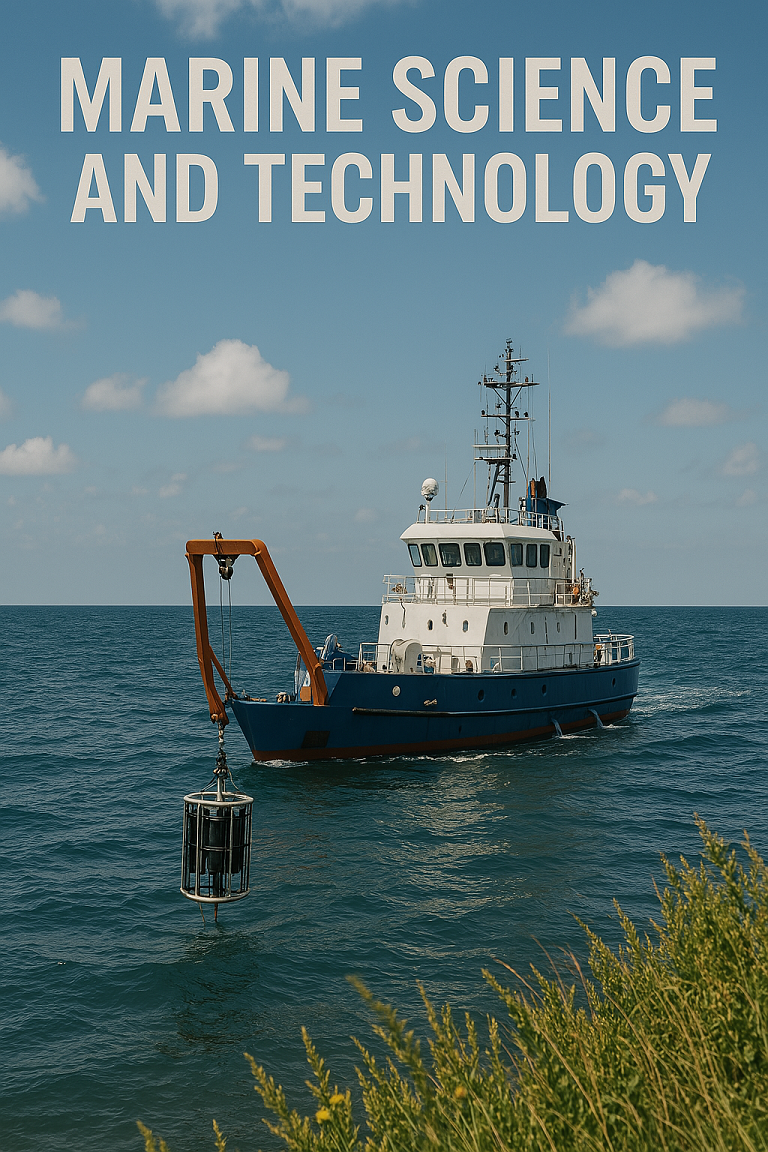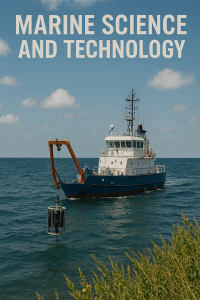Explore real-world applications, trends, and future outlooks in this comprehensive guide.
🌍 The Ocean’s Future is Powered by Technology
Did you know that over 80% of our oceans remain unexplored? As the demand for sustainable marine resources and environmental knowledge grows, so does the need for advanced technologies to understand, manage, and protect our seas.
Welcome to the world of marine science and technology—where cutting-edge tools like autonomous vehicles and digital training systems are reshaping the way we study, use, and navigate the oceans.
💡 What Is Marine Science and Technology?
Marine science is the study of the ocean’s physical, chemical, geological, and biological systems. Marine technology refers to the tools and techniques used to explore, monitor, and interact with the ocean.
Together, they drive progress in:
-
🌊 Environmental monitoring
-
🚢 Maritime navigation
-
🎓 Education and training
-
⚓ Sustainable ocean economy (blue economy)
🤖 Autonomous Technologies: Redefining Ocean Exploration
What Are Autonomous Marine Vehicles?
Autonomous Underwater Vehicles (AUVs), Unmanned Surface Vehicles (USVs), and Remotely Operated Vehicles (ROVs) are robotic systems that explore and collect data from the ocean without human onboard control.
🌐 Real-World Applications:
-
Climate research – Measuring ocean temperature, salinity, and pH
-
Biodiversity studies – Monitoring coral reefs and marine life
-
Search & rescue missions – Supporting disaster response
-
Oil & gas inspections – Inspecting underwater pipelines and rigs
-
Defense & security – Monitoring maritime borders and illegal fishing
📊 Key Stats:
-
The global AUV market is projected to reach $8.5 billion by 2032
-
Over 6,000+ oceanic missions are conducted annually using autonomous systems
-
Institutions like NOAA, NASA, and IFREMER are key users
💬 “Autonomous marine systems are helping us collect decades of ocean data in just a few months.” — Dr. Michelle Thorn, Marine Robotics Specialist
🌐 Digital Innovations in Maritime Education
Why Is Digitalization Crucial?
With evolving maritime technologies and new sustainability standards (like IMO decarbonization goals), maritime education must prepare the workforce with next-gen skills—digitally and globally.
🖥️ Key Digital Tools Transforming Maritime Learning
| Tool | Function | Benefit |
|---|---|---|
| Simulators | Train seafarers in virtual environments | Safe, realistic learning without risk |
| Learning Management Systems (LMS) | Deliver online courses and assessments | Flexible and scalable education |
| AR/VR & Gamification | Immersive training for engine rooms, bridge ops, etc. | Enhances memory and engagement |
| Digital twins | Simulate ship systems for predictive maintenance | Boosts understanding of real-time operations |
| AI-driven assessments | Adaptive testing and personalized feedback | Increases learning efficiency |
🌍 Example Initiatives & Case Studies
-
IMO’s e-learning platform offers global certification courses
-
Wärtsilä’s Smart Marine Ecosystem combines simulation and AI
-
World Maritime University (WMU) incorporates sustainability-focused digital tools into training
-
SEANERGY & EDINAF Projects in Europe explore digital twins and hybrid simulations for energy-efficient shipping
📈 Maritime education providers report a 30–40% increase in student performance with digital content vs traditional methods.
🚢 Industry Impact: Bridging Science, Training, and Innovation
Marine technology is bridging gaps across the entire maritime value chain:
-
Scientists gain high-resolution data for climate and biodiversity research
-
Shipping companies use real-time tech to optimize fuel efficiency
-
Students and cadets access flexible digital education from anywhere
-
Governments and policymakers rely on accurate ocean intel for marine spatial planning
🔮 What’s Next? Trends to Watch
🔧 Emerging Trends in Marine Tech & Science:
-
🌐 Cloud-based ocean data platforms (e.g., Copernicus Marine Service)
-
🧠 AI-powered marine forecasting systems
-
🛰️ Satellite-autonomous hybrid monitoring systems
-
🧬 Genomic ocean sampling via robotic labs
-
⚓ Maritime metaverse for full-immersive learning experiences
❓ FAQs – People Also Ask
❓What is the role of autonomous technology in marine science?
It enables efficient, real-time ocean data collection from deep and hazardous zones without putting human lives at risk.
❓How are digital tools used in maritime education?
From simulators to virtual classrooms and AI tutoring, digital tools modernize training and help seafarers adapt to complex, tech-driven vessels.
❓Are these technologies accessible globally?
Yes. Many international platforms like IMO e-learning, UNITAR, and WMU offer free or low-cost access to digital maritime education worldwide.
❓What careers are emerging in marine science and tech?
Careers include marine robotics engineer, ocean data analyst, simulator instructor, maritime cybersecurity expert, and digital twin technician.
📌 Top Trending Keywords (2024–2025)
-
“Autonomous underwater vehicles for ocean research”
-
“Digital maritime training platforms”
-
“Marine robotics market growth”
-
“Smart shipping education tools”
-
“Maritime simulation training”
-
“AI in ocean science”
-
“Online STCW certification courses”
📚 References & Further Reading
✅ Conclusion: The Ocean’s Future Is in Our (Digital) Hands
From autonomous vehicles mapping deep-sea mysteries to interactive simulators shaping future seafarers, marine science and technology are rewriting the script of how we understand and interact with the ocean.
🚀 Whether you’re a student, scientist, policymaker, or professional—now is the time to dive into the digital wave of maritime innovation.
🔗 Stay updated at MaritimeEducation.com — your go-to source for ocean knowledge, training resources, and future-ready maritime insights.


